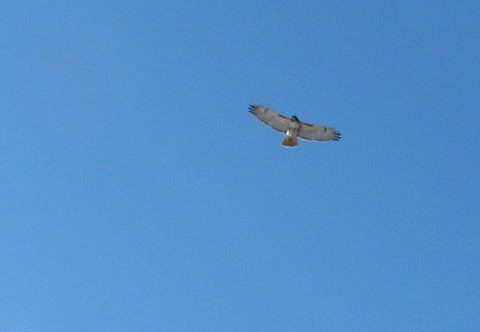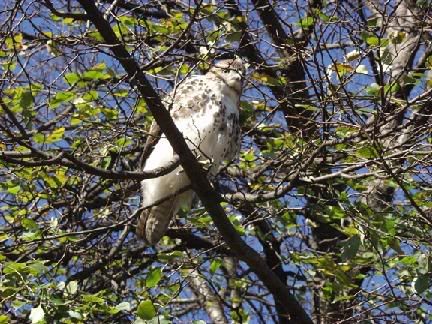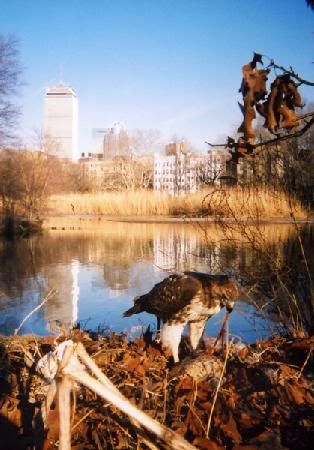365 Urban Species. #045: Red-tailed Hawk

Photos by cottonmanifesto
Urban Species #045: Red-tailed hawk Buteo jamaicensis
The red-tailed hawk has earned its place as the contemporary living emblem of urban nature. It seems to thrive in the city, uninvited, unencouraged, and seemingly incongruous with the man-made landscape. There are few real predators living in the midst of the glass and steel towers.
One of the first actions taken by humans when they claim land is to purge it of predatory animals. So it was with hawks: shot on sight when they were thought to menace the farmer's chickens, most species see a calamitous drop in population when human settlements spread. In the United States during the twentieth century, a series of laws was enacted to protect birds of prey. Their numbers have slowly increased over the past few decades, and today a hawk is not an uncommon sight, in almost any kind of environment.
Red-tails are fortunate to feed on those prey species that tend to increase with human use of the land. Squirrels, chipmunks, voles and rats are the most common mammals taken, while ducks, crows, and pigeons are common feathered food. The exponential growth of paved roads in America during the latter half of the previous century has ensured a steady supply of roadkill, a source of food that red-tails are not above.
Red-tails are in many cases responsible for human awareness of urban nature. When a city-dweller looks up and sees a large raptor soaring overhead, or perched on a ledge, it awakens the bond with wilderness inherent in all. The relatively new genre of urban nature documentary owes much to the red-tailed hawk. They are the heroes of Pale Male and the villains of The Wild Parrots of Telegraph Hill.

A juvenile red-tailed hawk (red tail feathers grow in with adulthood)

Red-tail feeding on a mallard.